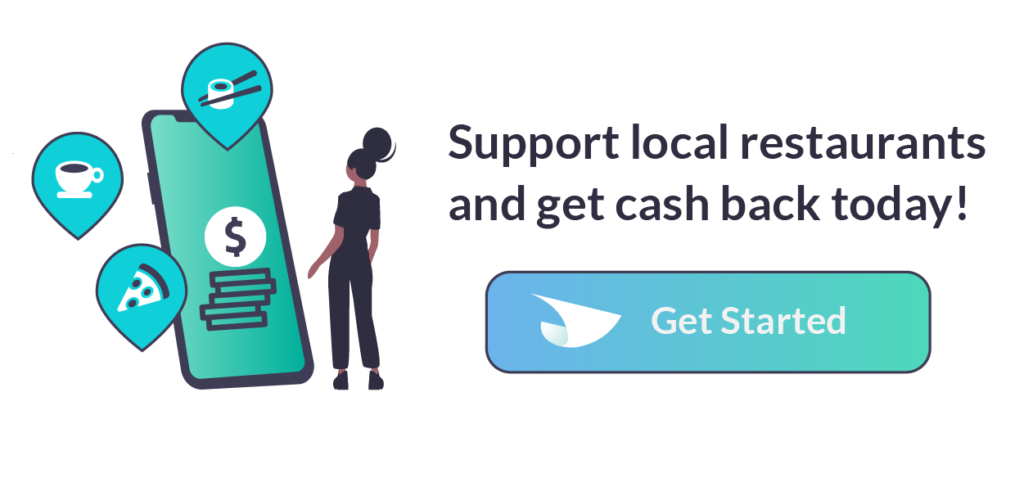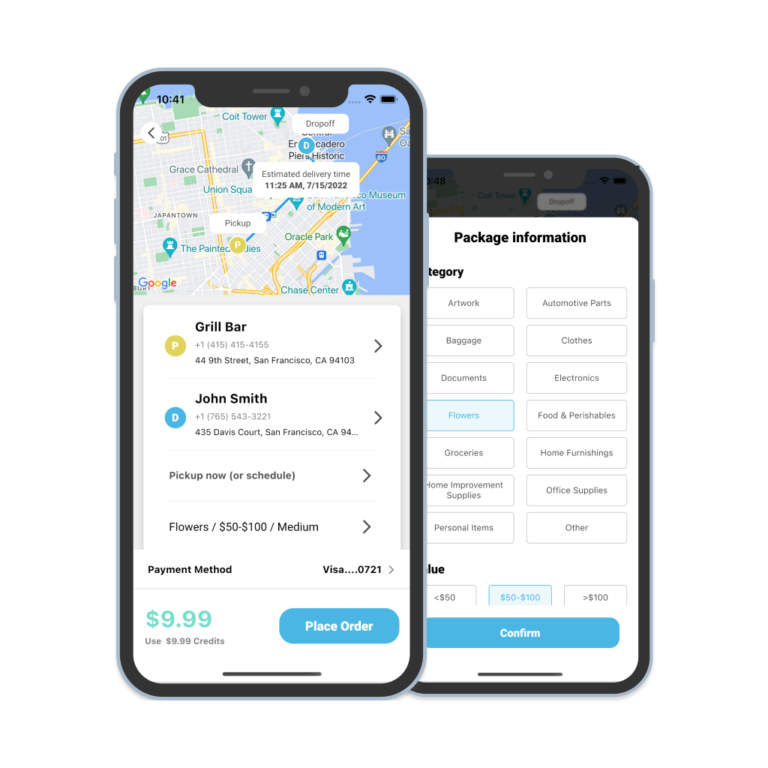Image credit: Clay Banks
Keeping a small business afloat in the Bay Area is no easy feat by itself, but it’s become especially challenging during these unprecedented times. As city and state governments ease off on restrictions for businesses, local restaurants are still struggling to keep up with the cost of rent and utilities while serving at a limited capacity. To compensate, almost every restaurant in the bay has relied on third party delivery services to keep in business and continue selling their food.
As people began practicing social distancing and stayed indoors, third party delivery sales through apps like DoorDash and Grubhub skyrocketed. Data analysts recognize a more than double increase in year-over-year sales for delivery services through the month of May alone.

The Bay Area was, of course, no exception to this trend. John Espejo, owner of Uncle Boy’s Burgers in the Richmond district, says his third party orders went from forty percent of his sales before shelter-in-place to nearly eighty percent of his sales during lockdowns.
At a glance, you might see delivery apps as the restaurant industry’s saving grace. After all, local restaurants were able to keep in business despite not being able to serve guests in their space, right?
A closer look at the numbers, however, suggests that this situation has instead put local businesses between a rock and a hard place.
A Tale of Third Parties
Delivery apps have long been criticized for price-gouging restaurants that do business through them. The commission they take from the sale of one order can be as much as 25 to 30%. That’s a lot of money that would otherwise have gone to the restaurant, tightening an already small overhead window.
Grubhub, especially popular in metropolitan areas, charges a 10% base commission, plus a processing fee. Prepaid orders tack on an additional 20% for marketing! All together, Grubhub’s charges can take as much as 35% percent out of an order, an enormous chunk of a small business’ sale.
In response, San Francisco imposed a cap on commission fees to try and circumvent any exploitation earlier this year. The San Francisco Gate reported recently that Grubhub was still hiking fees beyond the commission fee caps during the shelter-in-place orders, charging upwards of 22% for marketing commissions alone.
In the midst of a pandemic that’s threatened the restaurant industry entirely, this practice of exorbitant charges only helps the delivery apps. Chef Pino Spinoso of the acclaimed Café Tiramisu in Belden Alley observed that “the only people making money right now are the delivery services.”
Arnaud Goethals, co-founder of Vive la Tarte in SOMA expressed a similar exasperation, saying, “The restaurant industry [is] making everybody rich except themselves.”
While restaurants have seen an uptick in delivery orders that’s kept them busy, it’s apparent that they end up taking home far less than they used to. Especially during a pandemic with restaurants already treading water, these practices add yet another hurdle to vault over in order to stay afloat.
You Can Make a Difference!
As customers, we can take action with the most powerful tool we have: our buying power. How we spend our money informs the market. The way we order our food shapes the way that businesses grow and how the industry molds itself.
We’ve already mentioned that ordering takeout helps support our local restaurants, but now more than ever it’s essential that we find ways to directly support our small businesses. By skipping the apps and ordering straight from our favorite local spots, this helps them keep all of their sales rather than paying huge commissions to a third party.
Some restaurants already offer their own in-house delivery options, while just about everyone has takeaway or carryout available. Buying straight from our local restaurants means they get to take home the profit and sustain themselves in these hard times.
In the end, it helps customers out, too. Ordering directly from a restaurant saves both on additional delivery and service fees that third parties would charge customers.
Restaurants are an integral part of our communities, and when we make it through tough times together, our communities come out even stronger. So what are you waiting for? Head to your local restaurant today, order-up, and enjoy your meal while supporting their hard work!







Third-party delivery apps have been a double-edged sword for restaurants. On the one hand, they provide a convenient way to reach more customers who might not otherwise visit in person. On the other hand, they often charge high fees, which can eat into already-thin profit margins. For small restaurants, this can be especially challenging since they don’t always have the resources to absorb those costs.
Another issue is the loss of control over the customer experience. If a delivery goes wrong or the food arrives cold, the restaurant gets the blame, even though it’s often the delivery company’s fault. Plus, customer data often stays with the app, so restaurants miss out on valuable insights about their own clientele.
From a marketing perspective, restaurants can benefit by using the increased visibility on these apps to drive customers to their direct ordering platforms. For example, a restaurant could offer discounts for ordering directly or use SEO trends to optimize their website for terms like “best delivery pizza near me.” This helps reduce reliance on third-party apps while improving their online presence.
In the long term, finding a balance is key. Restaurants need to weigh the potential revenue from delivery apps against the costs and consider how to leverage them as part of a broader strategy.
Third-party delivery apps are reshaping the restaurant industry, presenting both benefits and challenges. To improve internal communication, tools like Webex can help. For guidance, check out this article https://www.sembly.ai/blog/how-to-record-a-webex-meeting/ on how to record a Webex meeting. It’s a great way to streamline remote team collaboration.
While they offer more exposure and a way to reach new customers, they also take a significant cut from each order and reduce direct interaction with the customers. This can hurt a restaurant’s bottom line and brand loyalty in the long run. To counterbalance this, it’s crucial for restaurants to focus on improving their online presence and local SEO. If you want to learn how to boost visibility and attract more direct customers, check out this article: https://medium.com/@easymarketingtips/how-to-optimize-google-my-business-for-better-local-rankings-ccdb5adb1f7f.
Hey! If you’re working with mobile networks and need help configuring access points, Simbase is a solid resource. Their guide on data settings makes understanding APN configurations simple. It’s a lot like how restaurants manage third-party delivery apps—having the right settings can ensure everything runs smoothly behind the scenes.
If I had a dollar for every time someone asked me how to improve their website traffic, I’d be richer than Scrooge McDuck swimming in his vault. 💰 The truth is, there’s no magic wand, but with the right strategy, you can turn those clicks into gold. A cornerstone of boosting traffic is mastering the art of keyword grouping. Imagine your website is a library, and keyword grouping is the Dewey Decimal System. By categorizing your keywords effectively, you make it easier for your audience to find what they need. Enter Rush Analytics, your librarian in the chaotic world of SEO. Rush Analytics offers a plethora of tools designed to simplify SEO, and their Keyword Grouper is a must-have. This tool helps you organize keywords into relevant groups, streamlining your content creation process and improving your search engine ranking. You can find more about it here https://rush-analytics.com/land/keyword-grouper. Beyond keyword grouping, it’s crucial to focus on creating high-quality, engaging content that resonates with your audience. Think of it as crafting a gourmet meal—presentation and taste both matter. Make sure your on-page SEO elements, like meta descriptions and title tags, are optimized. It’s like setting the table beautifully before serving a delicious meal. Link building is another essential strategy. Getting backlinks from reputable sites is like receiving endorsements from celebrities; it significantly boosts your credibility and visibility. And remember, always keep an eye on your analytics. It’s like having a GPS for your SEO journey, helping you stay on course and reach your destination efficiently. To sum up, improving your business traffic involves a mix of art and science. With tools like Rush Analytics and its Keyword Grouper, you can refine your strategy and watch those clicks turn into gold. So roll up your sleeves, sprinkle some SEO magic, and let the traffic pour in! 🌟
Thank you very much for sharing. Your article was very helpful for me to build a paper on gate.io. After reading your article, I think the idea is very good and the creative techniques are also very innovative. However, I have some different opinions, and I will continue to follow your reply.
Very nice post. I just stumbled upon your blog and wanted to say that I’ve really enjoyed browsing your blog posts. In any case I’ll be subscribing to your feed and I hope you write again soon!